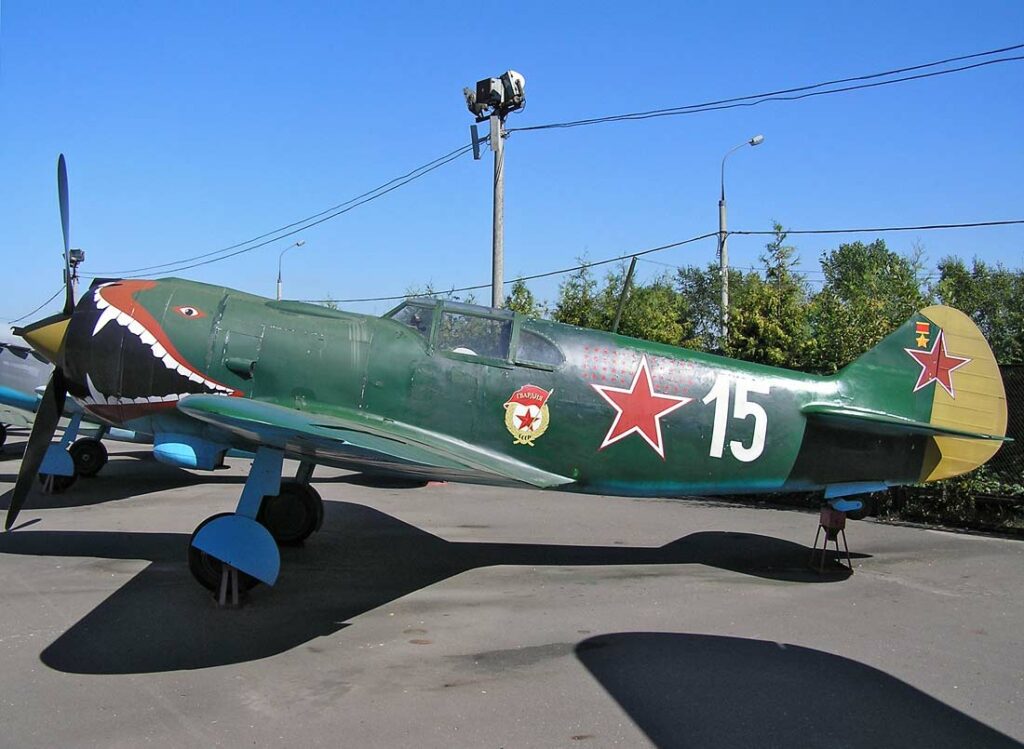The Lavochkin La-5, a robust Soviet WWII fighter, excelled in agility and close-range combat, pivotal against German aircraft.
This article presents an in-depth analysis of the Lavochkin La-5, a key Soviet fighter aircraft during World War II. It explores the aircraft’s development, design, performance, and combat roles, contextualizing its creation against the backdrop of the war’s demands. The La-5 was developed to address specific combat needs, offering a blend of power, agility, and effectiveness in air battles. Its design, marked by innovative engineering, addressed various operational challenges, while its performance was characterized by impressive speed and maneuverability. In combat, the La-5 proved to be a formidable opponent against German aircraft, significantly contributing to the Soviet air effort in key battles and campaigns. The article concludes by reflecting on the La-5’s impact on aerial combat during WWII and its legacy in aviation history.
The Lavochkin La-5 holds a prominent place in the annals of World War II aviation. As a mainstay of the Soviet Air Force, it played a crucial role in countering German air power on the Eastern Front. This article aims to provide a comprehensive overview of the La-5’s development, design characteristics, performance capabilities, and its significant role in combat operations.
History of the Development of the Lavochkin La-5:
In the early 1940s, as World War II intensified, the Soviet Union found itself in urgent need of a capable fighter aircraft to challenge the German Luftwaffe’s dominance. The development of the Lavochkin La-5 was initiated by Semyon Lavochkin, a prominent Soviet aircraft designer. His aim was to create a fighter that combined speed, agility, and firepower to effectively engage and defeat German aircraft.
The La-5 program began as an effort to improve upon the earlier Lavochkin LaGG-3. The need for a more powerful and agile fighter was driven by the escalating air battles on the Eastern Front. The aircraft’s development was a response to the German invasion of the Soviet Union in 1941, underlining the urgency for an effective air defense.
The La-5 made its maiden flight in 1942, representing a significant step forward in Soviet fighter design. The timing of its introduction was crucial, as the Soviet Air Force desperately needed a capable fighter to counter the advanced German aircraft, such as the Messerschmitt Bf 109 and Focke-Wulf Fw 190.
Design of the Lavochkin La-5:
The design of the La-5 was a blend of innovation and practicality. It was a single-engine, single-seat fighter with a length of 8.67 meters (28.4 feet) and a wingspan of 9.8 meters (32.2 feet). The aircraft’s airframe was primarily constructed from wood, a strategic choice due to the scarcity of metal resources during the war.
One of the key design features of the La-5 was its powerful Shvetsov ASh-82 radial engine, which significantly enhanced its performance. The aircraft was also equipped with two 20mm ShVAK cannons, providing substantial firepower for dogfighting and ground-attack missions.
The La-5’s design was not without drawbacks. Its wooden construction, while resource-efficient, limited its durability compared to metal-framed aircraft. Additionally, the early models had visibility and cockpit ergonomics issues, which were later addressed in subsequent variants.

Performance of the Lavochkin La-5:
The La-5 was powered by the Shvetsov ASh-82 radial engine, producing approximately 1,700 horsepower. This engine enabled the aircraft to reach a top speed of around 648 km/h (403 mph) and attain a service ceiling of 11,000 meters (36,090 feet). It had a range of about 765 kilometers (475 miles), making it suitable for a variety of combat missions.
In comparison with contemporary fighters, the La-5 held its own, particularly at lower altitudes where its power and maneuverability were most effective. It was competitive against German aircraft like the Bf 109 and Fw 190, especially in close-range engagements.
Military Use and Combat of the Lavochkin La-5:
The La-5’s armament, consisting of two 20mm ShVAK cannons, was effective in both air-to-air combat and ground-attack roles. It saw extensive use in key WWII battles, including the Battle of Stalingrad and the Kursk offensive, where it played a pivotal role in achieving air superiority.
The La-5 went head-to-head with various German fighters, often proving superior in agility and close-range combat. Although not extensively exported, its impact was felt primarily within the Soviet Air Force, where it became one of the most important fighters of the war.
The La-5 continued to serve post-WWII but was eventually replaced by more advanced jet fighters. Its legacy, however, endures as a symbol of Soviet resilience and innovation in aerial combat during one of history’s most challenging periods.
The Lavochkin La-5 stands as a significant contribution to World War II aviation history. Its development was a direct response to the urgent needs of the Soviet Air Force during a critical time. In combat, the La-5 demonstrated a remarkable blend of speed, firepower, and maneuverability, playing a vital role in the Eastern Front air battles. Its legacy is a testament to the ingenuity and resourcefulness of Soviet aircraft design in the face of adversity, leaving a lasting impact on the evolution of military aviation.
Back to the Warbirds section.